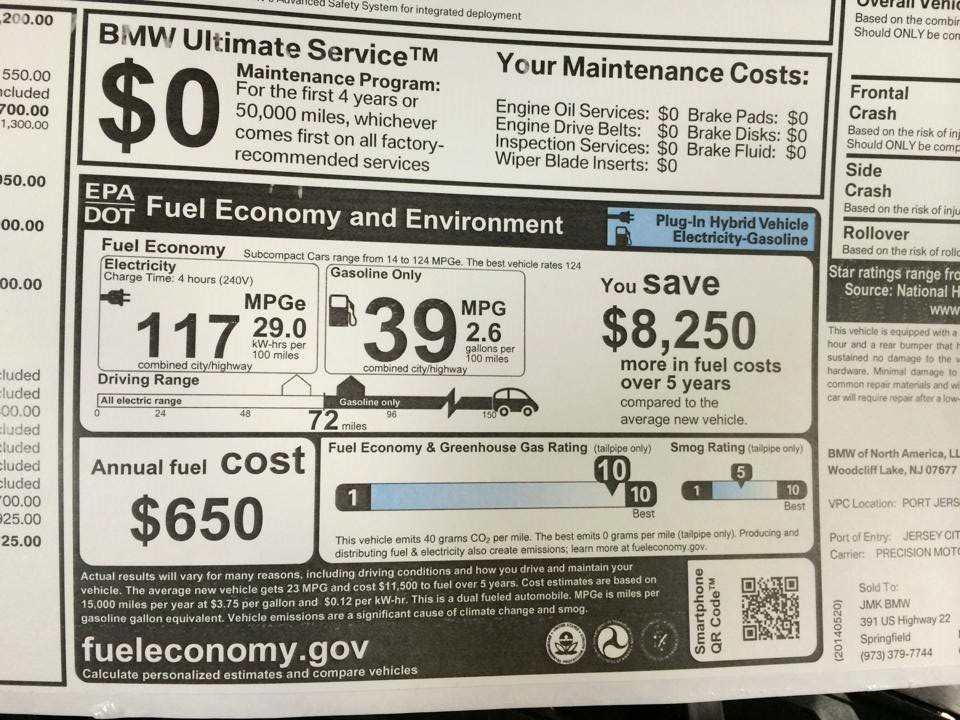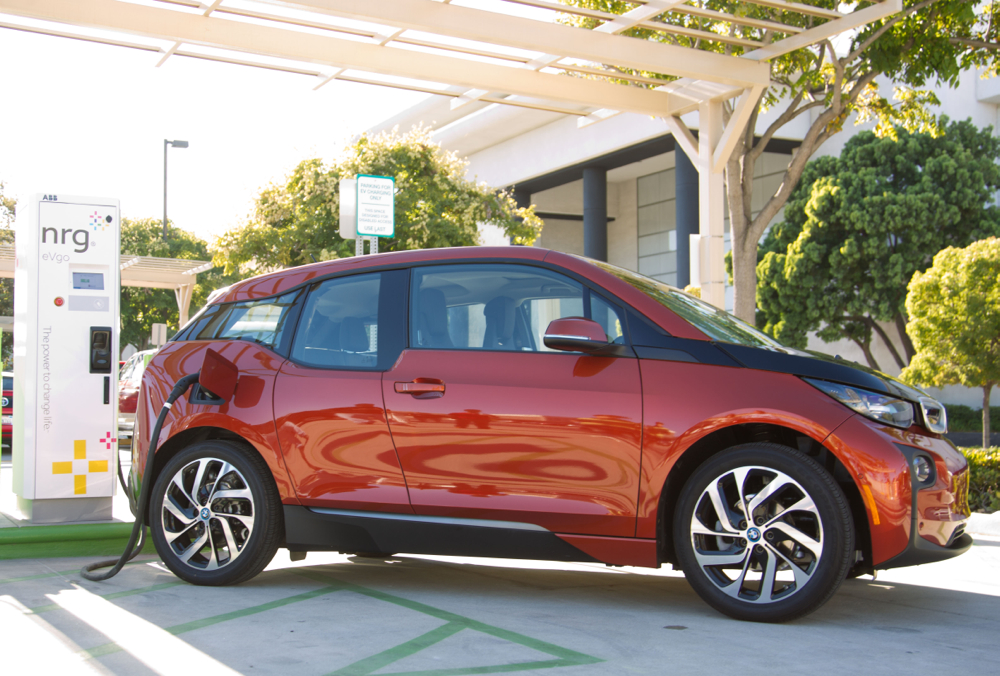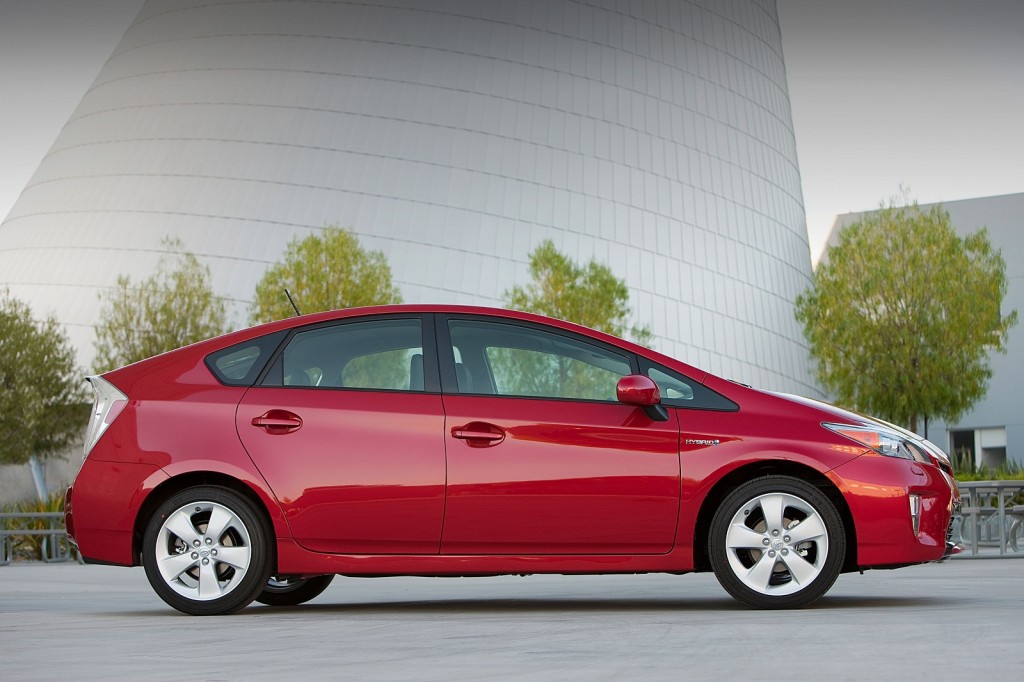Electric cars don't use "fuel" as such, but you'll still find fuel-economy ratings on their window stickers.
Those MPGe figures have mystified many potential plug-in electric car buyers, but they remain the primary way of comparing energy efficiency by internal-combustion and electrified vehicles.
DON'T MISS: Plug-In Electric Car Sales Continue Rise In 2014: 100,000-Plus Last Year: MORE UPDATES
For those looking for a quick primer, the meaning of MPGe is broken down in this short video from CNET.
The term "MPGe" stands for "miles per gallon (of gasoline) equivalent," and it's exactly what it sounds like.

2014 BMW i3 range-extender EPA window sticker (Image: Tom Moloughney)
To determine MPGe ratings, the U.S. Environmental Protection Agency (EPA) uses a set amount of electric energy that's equal to the energy contained in 1 gallon of gasoline.
The EPA says one gallon of gas contains 115,000 BTUs of energy--which equates to 33.7 kilowatt-hours.
RELATED: In Just One Year, Electric Cars Have Gotten Cleaner: How'd They Do That?
For a battery-electric car, the distance it can cover on that amount of energy is used to determine its MPGe rating, which goes on the window sticker in place of the traditional miles-per-gallon figures.
However, plug-in hybrids get both types of rating, since they can operate on either gasoline and electricity together or electricity alone.

BMW i3 at DC fast-charging station
This is also the case with extended-range electric cars like the BMW i3 REx and Chevrolet Volt--even though the gasoline engines in those cars function primarily as generators.
There's one more noteworthy piece of efficiency information on U.S. window stickers as well.
ALSO SEE: Miles-Per-Gallon Is Just Stupid. No, Really, It Is.
Carmakers are now also required to list consumption--either in kilowatt-hours of electricity or gallons of gasoline--over 100 miles.
That's the inverse of miles-per-gallon, and it's linear, unlike the MPG scale.
While the 5-mpg improvement from 10 to 15 mpg appears to be the same as the one from 50 to 55 mpg, they're not the same in terms of percentages.

2015 Toyota Prius Liftback
The lower number is an improvement of 50 percent, while the higher number is an improvement of just 10 percent.
That's why improving the fuel economy of the least-efficient vehicles can be just as important as squeezing a few extra mpg out of the most-efficient ones.
As carmakers work to meet tougher emissions standards, consumers should expect to see increased fuel economy--and more of those MPGe figures--in a wider variety of vehicles over the next few years.
[hat tip: Joshua Harrison]
_______________________________________________












